Camellia provides an evergreen tree or shrub from the Tea family with varied inflorescences and glossy leaves. But despite its grace and beauty, culture is not a frequent inhabitant of apartments, which is associated with difficulties in cultivating a representative of the tropical flora in the apartment environment.
Material Content:
Types and varieties of flower
The genus has more than 80 species, some of which are grown at home and have become the basis for breeding many varietal camellias of various shapes and colors.

Varieties common in indoor floriculture:
- Japanese camellia - a tree or shrub reaching 10 m in height. Glossy ellipsoid or egg-shaped leaf plates perfectly shade the half-double and double flowers of white, red or pink flowers that bloom from December to April.
- Mountain camellia is a shrub plant that reaches a height of 5 m in the natural environment. Branched, thin shoots are slightly pubescent with red villi and covered with elliptical or ovate shiny leafy plates with serrated edges. From late autumn to mid-winter, fragrant flowers of white, red and pink colors are noted.
- Chinese camellia, it is also a tea bush, is an evergreen plant in the form of a bush up to 10 m in height.Oval or regular leaf plates are painted dark green above and lime green below. Yellow-pink flowers, collected in 4 pieces each in axillary inflorescences, exude a strong, pleasant aroma during flowering.
Conditions for growing camellia
Flowering culture is observed in the winter season, so camellia often gets into a new house as a living bouquet, which not everyone can save. To make this possible, you should first study the nuances of the conditions of detention, and then ensure them, observing all the requirements.
Proper lighting for flowering
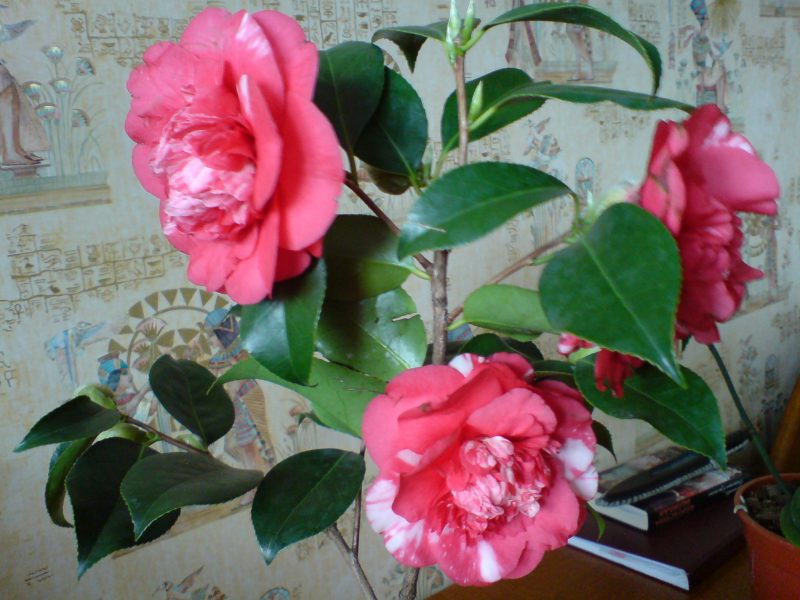
Camellias need a large amount of bright diffused light for flowering, which will evenly fall on the shoots of culture from all sides. You can achieve uniform lighting by systematically turning the pot around its axis. However, if buds have already formed on the bush, then it should not be disturbed: this can lead to their dumping.
Placing a flower in an apartment
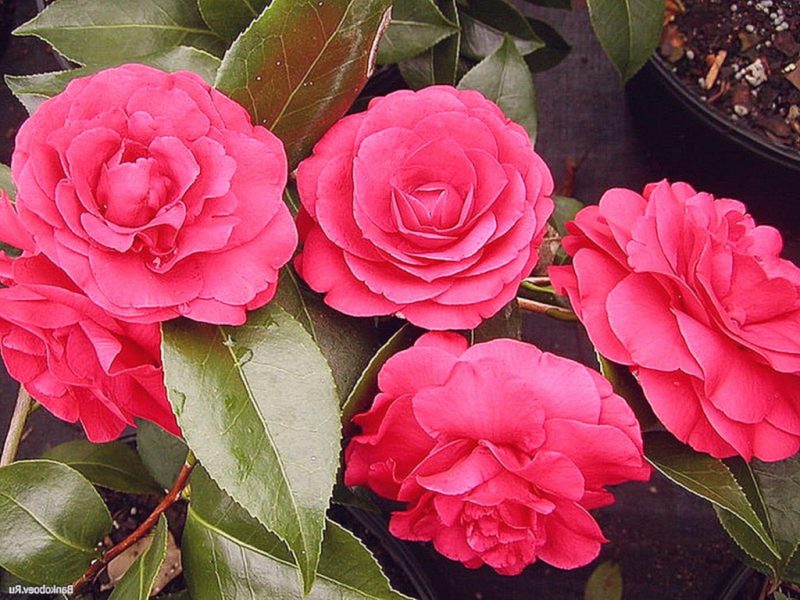
To ensure the required lighting regime, camellia should be placed on the windowsills of the western or eastern windows. If there are windows only in the southern direction, the flower must be shaded during the period of solar activity. In the summer, it is better to move the pot outside to a shaded place where direct sunlight does not fall.
Temperature mode
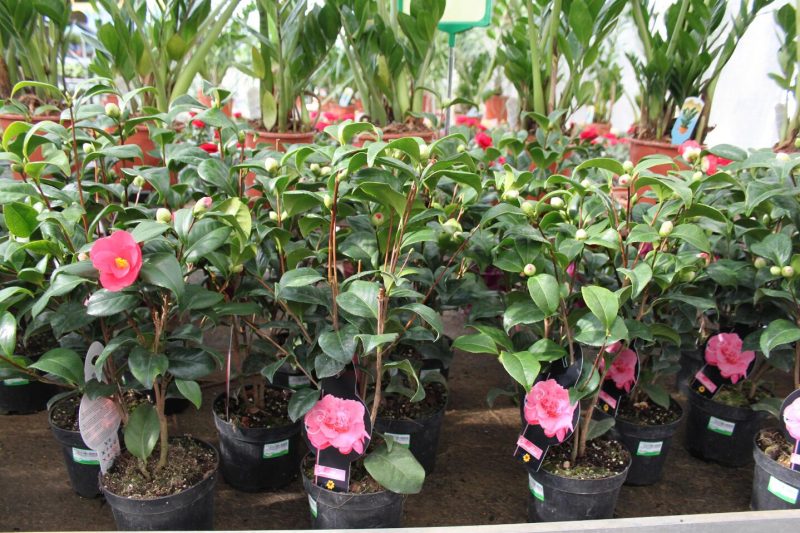
Unlike orchids, the main difficulty of growing which is the correct selection of substrate, camellia is demanding on temperatures:
- Maintaining the temperature regime in the spring-summer period is not difficult, since the optimal temperature range is 22–25 ° C.
- For planting buds with a long daylight hours, the mercury column of the thermometer should not exceed a value of 18 ° C.
- Ensuring the winter temperature regime in urban apartments with central heating is the most difficult, since camellia blossoms at this time at 8–12 ° C. Higher temperatures can lead to dropping buds, loss of decorativeness by the plant and even death.
Humidity
A tropical plant needs moist air, to ensure which the pot is placed on a pallet with moistened pebbles and systematically sprayed with soft water. In the flowering phase, it is necessary to spray carefully so that the liquid does not fall on the petals of the inflorescences.
Care for camellia at home
In addition to providing the necessary conditions of detention, for successful cultivation home camellia requires proper care.
How to water a flower?
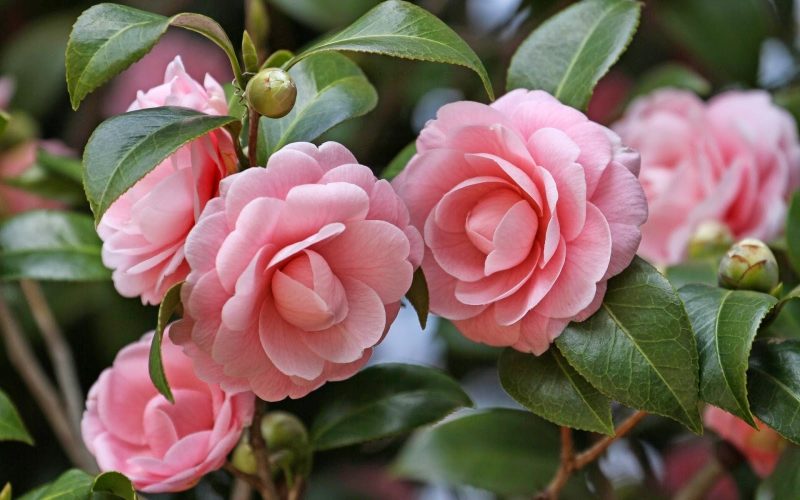
Moisturize the plant should be plentiful, avoiding an excess of moisture. Between water procedures, the top layer of the substrate should have time to dry. In the winter, when the flower is kept in a cool room, the volume and frequency of moisturizing are reduced in order to prevent souring of the earthy coma and the beginning of the development of rot. However, drying out is also detrimental to the crop and causes foliage to drop.
Important! For irrigation, as well as for spraying, only soft, settled water without chlorine is used.
Fertilizer and fertilizer
Since camellia does not have a pronounced dormant period, the plant is fed throughout the year. The optimal interval between top dressings, which should include all macro elements (nitrogen, phosphorus and potassium) is 20 days.
Trimming and nipping technology

Camellia painfully suffers pruning, so it is carried out in extreme cases and with extreme caution:
- To maintain decorativeness. When there are many weak and bare shoots, they are removed.
- To stimulate the development of axillary kidneys. In the second half of autumn, the shoots are shortened.
- In the phase of budding. To preserve the plant more strength and provide a beautiful flowering, the weakest buds are removed by pinching. This is done in such a way that no more than 2 buds remain on the shoot.
Transfer
Young plants are transplanted every spring.With annual flowering, you can increase the interval to 2 years.
If camellia is grown in a tub, then it is necessary to renew the top layer of the soil mixture annually with the simultaneous application of fertilizers.
Transplantation is carried out according to the following scheme:
- Drainage material is placed in the selected tank to ensure soil throughput.
- Drainage is sprinkled with an acidic substrate (pH 4.0–5.5) with a loose structure, which is prepared from turf, peat, leaf soil and sand in a ratio of 2: 2: 2: 1 or purchased in a flower shop (suitable for azaleas).
- The plant is transferred to a new tank, which is filled with a special substrate.
- In young plants, pinching of shoots is carried out, stimulating branching.
Reproduction of camellia at home
Camellia is a flower that propagates at home in a vegetative way, allowing you to save all varietal characters of the maternal specimen. However, if desired, the grower can propagate the plant with seeds.
Seed way
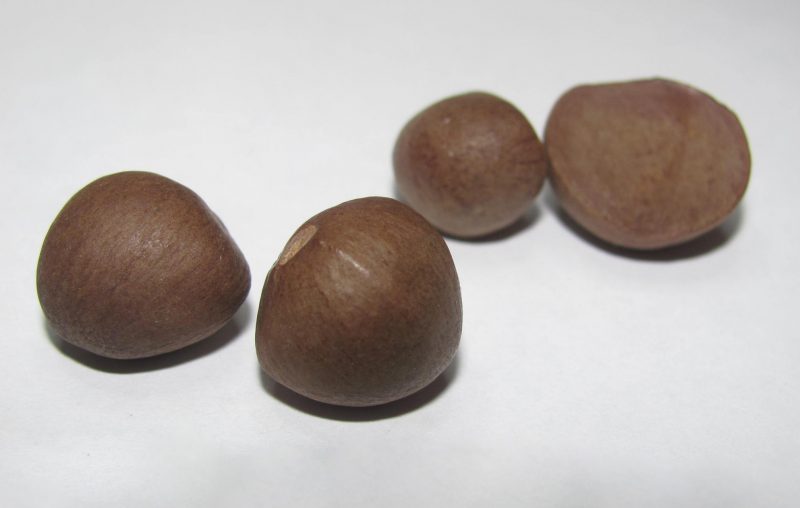
A laborious method in which:
- Individual cups with a diameter of 5 cm are prepared and filled with an acidic substrate.
- Each seed contains one seed.
- The containers are placed in a bright, warm place and covered with a film that is removed after emergence.
- After the seedlings form 1 pair of real leaves, they dive into larger diameter pots.
Cuttings

The procedure is carried out in the middle of summer or in the middle of winter.
- Non-lignified apical cuttings 8 cm long are cut.
- Oblique sections are treated with a growth stimulator.
- The box is filled with a soil mixture of equal parts of peat and sand.
- Prepared cuttings are vertically buried in the substrate.
- During the rooting period, plantings are watered and sprayed, and the temperature in the containment room is maintained within 20–23 ° C.
- Two to three months after the formation of the roots, the plants are planted in separate pots with a diameter of 7 cm, filled with a substrate of peat, leaf, sod land and sand in a ratio of 2: 2: 1: 1.
Vaccination propagation
There are varieties that are distinguished by poor rooting. In such situations, experienced gardeners resort to another vegetative method - grafting.

- Rooted cuttings or one to two year old plants are taken.
- A kidney with a small part of wood is cut from the top of the shoot of an unrooted variety and inserted under the bark of a prepared plant.
- If the grafted plant is kept in a room with a temperature of 20–22 ° C, vaccinations will germinate after 2 months.
- A year later, the plant is transplanted into a pot with a diameter of 9 cm, filled with a substrate for cuttings.
- And already in the third year, camellia is transferred to a container with a diameter of 14 cm with a soil mixture for an adult plant.
Diseases, pests and methods of dealing with them
A common and most dangerous disease of camellia is root rot., which is the result of excessive efforts of the owner - too low temperatures and excessive watering of the plant, leading to stagnation of moisture in the roots. At the first symptoms of the disease, the affected specimen needs to be transplanted into a new, disinfected substrate with good water and air permeability.
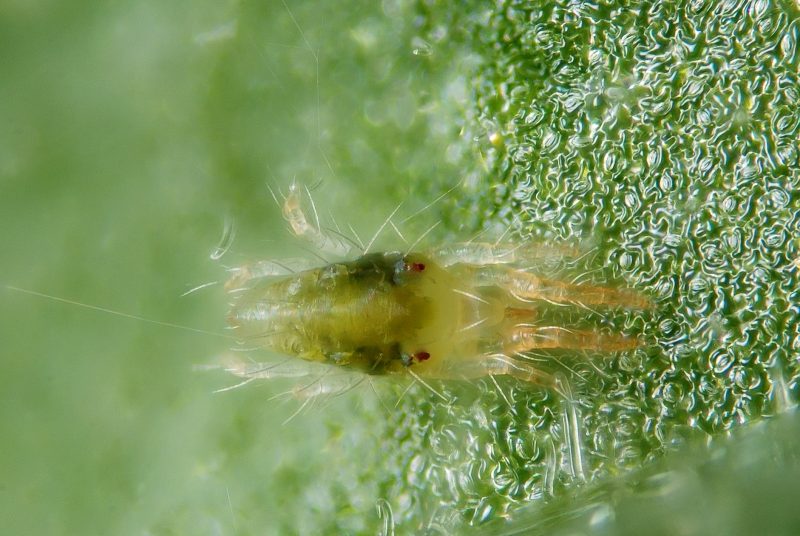
Also, brown spots may be noted on the culture, indicating the development of phylosticosis, provoked by excessively high humidity. When this disease occurs, the affected leaf plates are removed, the plant is sprayed with copper sulfate, and air humidity decreases.
Sometimes camellia is attacked by a spider mite, scutellum and aphid, which should be combated by treating a populated instance with a systemic insecticide solution according to the instructions indicated on the manufacturer’s packaging. If pests have just appeared, then you can try to cope with them with the help of two or three times spraying the culture with a soapy, warm solution.
Thus, if camellia got into the house as a gift, you should not rush to get rid of it after flowering is completed. Having created the necessary conditions for the growth of a tropical flower, the newly minted owner will be able to admire the beautiful flowering every year.












